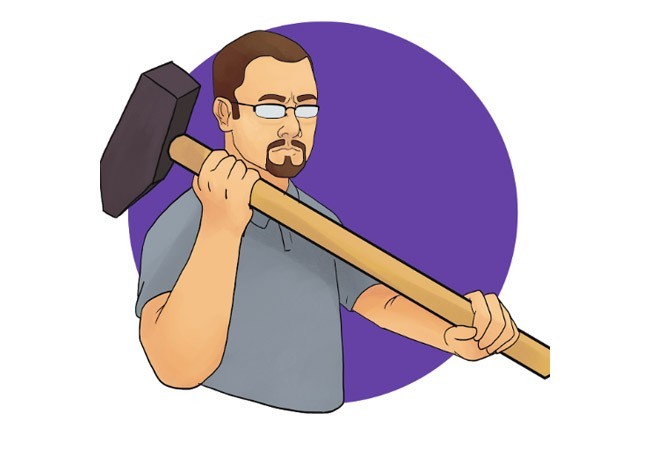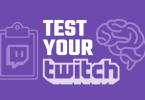Any well-oiled machine thrives on communication. It’s silly to think that a streamer alone can be the producer, director, technical engineer, agent, filmographer, audio engineer, moderator manager, etc. as things in the channel grow and scale. You have to have a TEAM who can talk together to help grow the channel and react rapidly to changing conditions.
Streamers should get to know their mods. They often need to know who to trust and who is willing to be a more-active part of the channel. And that takes relationship-building, which takes communication. And mods often need to alert streamers about things both during streams and as events arise. There is also need for mods to communicate with other mods, perhaps to “check-in and check-out” for who is active during long streams. Or share tools and tips and help train each other. And you should be asking your mods for tips on who new mods could be, if needed.
Many channels also have had a “Subscriber Teamspeak” or something of the ilk where the regulars could hang out and feel like a part the community. So what tools are out there for these two needs?

There is an extremely-high chance that if you’ve been DDOS’ed before as a streamer, it’s because the name resolution service on Skype can tie a username or email back to an IP address, unless preventative measure are taken. Microsoft, having purchased Skype back in 2009, has gone for deeper and deeper integration of Skype into Windows directly, basically ensuring that we will be wrestling with these issues for years to come.
You can enable some options (below) that stop non-contacts from getting their IP address with just their Skype username, but most people don’t know how to do that, and it also isn’t foolproof. You can be invited to a conversation by someone else, then everyone in there can get your IP address. You also likely have a tablet or phone in your house with Skype installed and running, even if you’ve not checked on it in awhile. Or someone from your family could be using Skype using the same connection as you.
After they lookup your IP address, it is then used to DDOS you. DDOS stands for Distributed Denial of Service. You get so much data sent to your IP that it makes your internet connection largely unusable. It can keep you from streaming entirely.
Here are some some Skype settings you can set to better protect yourself, if you just absolutely have to use it:
Options -> Advanced -> Connection -> Uncheck “Use port 80 and 443 for additional incoming connections”
Options -> Advanced -> Connection -> Check “Allow direct connections to your contacts only.”
Options -> IM & SMS -> IM settings -> Select “Only allow people in my Contact list to send me messages”
Options -> Calls -> Call settings -> Select “Only allow people in my Contact list to call me”
Options -> Privacy -> Privacy settings -> Select “people in my Contact list only” for all three (and uncheck the two advertisement-friendly settings at the bottom)
Also, Skype also has a heavy amount of ads, takes a more-than-generous amount of memory on your computer while running it, and tends to screw with your audio settings as a broadcaster.
It’s time to ditch Skype. Here are some alternatives we’ve tested:
Discord is the up-and-coming whirlwind force that has come at Twitch like a freight train over the past few months. Many are welcoming it with open arms. But some questions still remain, as it’s such a new product.
Discord bills itself as the “all-in-one voice and text chat for gamers that’s free, secure, and works on both your desktop and phone”. And on that front, it succeeds. It’s attractive, it’s light-weight on resources, it’s free, it doesn’t have ads, it’s SECURE, protects your privacy, they just added automatic Twitch Integrations, they let you setup permission levels for groups, so you could have your mods separated. And it works great on your mobile device and even browser. And the audio quality is fantastic. It really is hard to believe that it’s free without a catch.
And it can take abuse. In tests, 300+ people can connect to a single voice channel without much of a burp from the servers or interface. Not all communications tools can claim that.

There are still some issues, however.
– They don’t have custom emotes yet.
– They still don’t have true 1-on-1 global friendlist yet. You must share a group to see their online status.
– No video or screensharing functionality (yet, they have claimed to be working on video)
– No API or bots (yet)
– No 1-to-1 voice calls (again, yet. They claim much of this is coming)
– Still a number of bugs, at the time of this writing (Bluetooth audio), but they are rapidly deploying bugfixes.
With some of the lack of features when compared to Skype, it actually does better to compare Discord to Teamspeak, in which case it absolutely smokes Teamspeak in functionality, price, security. (Farewell, Teamspeak and Mumble and Ventrilo). But without 1-to-1 options, friendlist, video… Still can’t quite replace everything Skype had with it just yet. But we like how quickly they’ve been adding features and listening to the streaming community. We hope they’ll open some of the API/integration features soon, because our next tool excels in this area…
Honestly, Discord was inspired by Slack, who sort of has set the bar for the “post-IRC” communications world for businesses. And they look similar. Both were designed with Github’s Electron. They both work on similar platforms, including mobile and web. The developers have even described Discord as “Slack for gamers”, so it’s clear we’re really overlapping, but I’ll do my best to point out the differences.
Slack and Discord are both rooted in IRC, more than voice communications. Slack, unlike Discord, still holds on to its IRC roots very closely. In fact, it’s backwards compatible, which is a nice feature.
Slack is used by some large companies with thousands of members in a “team”, which is further split into “channels” which are hubs for relevant topics. It’s really a star of the BUSINESS world, not necessarily the gaming or Twitch world. It has really refined the text-based communication to a fine art, with excellent notification settings, rich media gif/video embeds, themes, private groups, direct messages, state of the art archive and search features. The TEXT side of Slack goes so much deeper than Discord, but natively does not have voice chat (yet, coming when they build out Screenhero technology).
Benefits of Slack over Discord:
– Integrations – Holy crap, you can plug Slack into anything. Twitter? App for that. Automatic gif embeds based on keywords? Yup. Chat games? Check.
– More integrations – Ok, I’m not kidding. Many services can be tied into Slack. You have a user fill out a form on your WordPress-based website, and it can notify a channel. You have a notification from TwitchAlerts? Yeah, there’s a way to plug that in to alert your mods. You want to be warned about weather alerts that may take out your internet while streaming? Yes, totally possible. ENDLESS PLUGINS AND CUSTOMIZATIONS.
– Better notifications and deeper settings (Can be setup so that it only plays an audio or popup alert for the streamer if a certain keyword or name is used, for example, and granular customization per channel and team)
– CUSTOM EMOTES – All the Twitch and custom gif emotes you could ever desire! (Individually added, unless you use a bot, like shown below)

– Doesn’t have voice chat built in (can be added with plugins, though)
– Doesn’t have video or screensharing (this is known to be coming in a future release, and can be added with plugin from multiple different services)
– Isn’t as easy to invite people with instant-invite links. You typically use email address to invite new members and want to trust them a bit more, perhaps ruling out subscribers/viewers and more for Mods-only.
This bot, specced by me and coded by CapnCase, can be downloaded free here: https://www.npmjs.com/package/twitch2slack
1) Automatic highlight timestamps saved to a channel
You simply press !highlight in chat, and the bot picks up the keywords and spits out a timestamp from the VOD of that exact moment into a Slack channel. Makes it easier for you or your mods to make VOD highlights later.
Looks like this:

Have a full, searchable history of WHO got banned and the last things they said right before they got banned or timed out. This is VERY USEFUL when you often will get PMs asking to be unbanned or want to keep your mods responsible. Currently, Twitch API does not tell you WHO did the banning, but, here’s what it could look like in Slack as a running record

Perhaps you send things to subscribers, or subscribers over a certain length of time. This automatically can keep history of subscribers for easy access:

Ever forget who was supposed to get what from a giveaway? The bot can even keep track of that, if the results are put into chat by a different bot. Example:

Other tools that some people consider are the following:
1. Google Hangouts – Doesn’t have great text-based group communication. Usually people’s real-world email addresses and names are used, which can be awkward for streamers. The video chat hasn’t worked out great for podcasts. Generally not the best Skype replacement for those reasons.
2. Wire – An upcoming clean, basic, group communication with HD group calls. Not a gaming product, but clearly aiming to take down Skype. It’ll be one to keep an eye on.
3. oovoo – Mostly just video chat.
4. hipchat – Very similar to Slack for base product, with a lot of integrations and deep chat functionality, but has options to pay to gain video chat and screensharing.
5. Zoom – Works well for video conferencing. Think podcasts.
6. Speak.io – Works either with Slack or stand-alone for “blazing fast audio, video and screen sharing”. Simple. Just works.
Right now, in our opinion, it’s a split answer. You still need multiple tools to get the job done.
Discord makes the best lets-get-everyone-in-and-chat spot for your Twitch subscribers and works great as a Teamspeak replacement.
Slack works best as a team thing, so a heavily-integrated mod team may use this. You may use Slack AND Discord both for your channel. Some do, for the bot features.
But then you’d still need something for video. But seeing as how we know both Slack and Discord are rushing towards native video and audio, there may soon be a one-tool-to-rule-them-all for Twitch channel communications. WHICH WILL IT BE? Ask us again in a few months. Until then, reference the gif below:

GIF by @xNitezxx





